Polyquaternium 10 is a skincare ingredient that is used in moisturizers, hair care products, and make-up. It is mainly used in hair care products to reduce static and minimize flyaways.
Polyquaternium-10 comes as a white powder with a slight amine scent. It works by absorbing to protein-containing surfaces such as the hair, enhancing the appearance of shine, increasing volume, and improving the feel of damaged or chemically treated hair.
Polyquaternium 10
the good: Improves the appearance of the hair, reducing flyaways and improving shine.
the not so good: Like any ingredient, it can be irritating to some skin types.
Who is it for? All skin types except those that have an identified allergy to it.
Synergetic ingredients: Works well with most ingredients.
Keep an eye on: Polyquaternium-10 is also known as Quaternium-19.
Why Is Polyquaternium 10 Used?
Polyquaternium 10 is mainly used to reduce static electricity that can occur between the hair shafts when they move against each other or against fabrics. This improves the appearance of the hair, giving it shine, improved volume and can also help to visibly improve the appearance of damaged or chemically treated hair.
Polyquaternium 10 has a similar role in moisturizers and makeup however it is far less commonly used in these formulations.
Is Polyquaternium 10 Safe?
Polyquaternium-10 has been reviewed by the Cosmetic Ingredient Review Expert Panel, a group responsible for evaluating the safety and efficacy of skincare and cosmetic ingredients. The Expert Panel reviewed the available data and concluded that polyquaternium-10 is safe as a cosmetic ingredient in its current concentrations and uses. In 2005, the Expert Panel evaluated new data and confirmed the above conclusion.
Polyquaternium 10 has low toxicity. Skin studies indicated that it was poorly absorbed into the skin. This is due to the fact that it binds to the protein, keratin, in the skin and hair. In high concentrations, 5% or greater, polyquarternium 10 can be mildly irritating to the skin and eyes. However, when used at 2% or lower this effect is not observed. It also is not genotoxic or photosensitizing.







